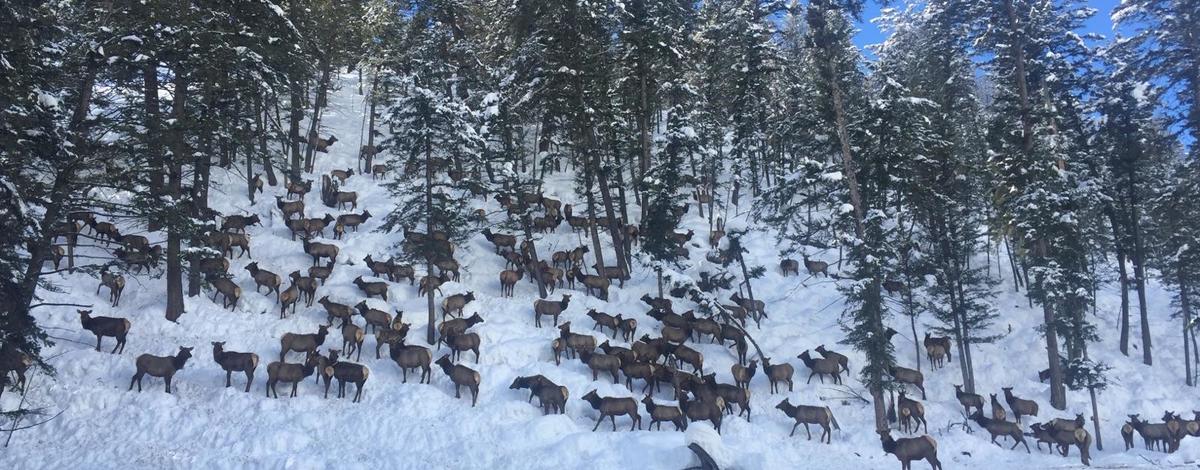History
The Southeast Region has significant history of winter feeding and has an active Winter Feeding Advisory Committee.
January 10, 2017 status report
The Southeast region has been meeting with their Winter Feeding Advisory Committee since early December, most recently on Tuesday, January 3, 2017. The committee and department staff agreed that winter conditions are serious and that we will continue to closely monitor big game on critical winter range, but did not identify a nutritional basis to initiate any winter feeding operations.
Region staff has initiated an elk feeding operation to address a growing public safety and property depredation concern in the Highway 30, Banks Valley area south of Montpelier. Fish and Game will be feeding hay and mineral blocks to a group of 400-500 elk in an attempt to bait them away from the highway and private hay stack yards in the Dingell area. The region is also initiating an elk feeding operation north of Montpelier, near the Ranch Hand truck stop, to lure elk away from chronic and growing depredations of area farming operations. Fish and Game is also closely monitoring a similar depredation situation between Grace and Thatcher that may require a lure feeding operation to protect area hay stacks and feed lines.
Fish and Game is also monitoring an elk depredation issue outside of Blackfoot that has improved since Shoshone Bannock Tribal wildlife staff initiated an elk feeding station on the reservation boundary at lower Lincoln Cr. If necessary, Fish and Game will offer assistance to the tribes to maintain the effectiveness of their operation to control the chronic elk depredations in the Blackfoot area.
Fish and Game is coordinating winter feeding operations and any observations of private feeding activities in Caribou and Bear Lake Counties – with IDA staff (Kelly Mortensen). Unauthorized deer/elk feeding in those counties is illegal due to brucellosis risk.
Winter Emergency Criteria
A winter emergency determination is based on a combination of factors that include:
- A significant number of deer on critical winter range;
- Deer body condition: best judgment, based on visual observation and field data for bone marrow condition or body fat reserves;
- Snow condition: depth, snow condition – assessment of difficulty for deer to move through snow (this is an assessment of energy cost for deer);
- Temperature stress: previous, current and expected low temperatures (this is an assessment of energy cost to deer);
- Expected duration of remaining winter. How much longer will deer have to rely on their fat reserves before warmer temperatures and spring green-up? It’s important that feed is provided to adult does before they pass the critical point of no return.

